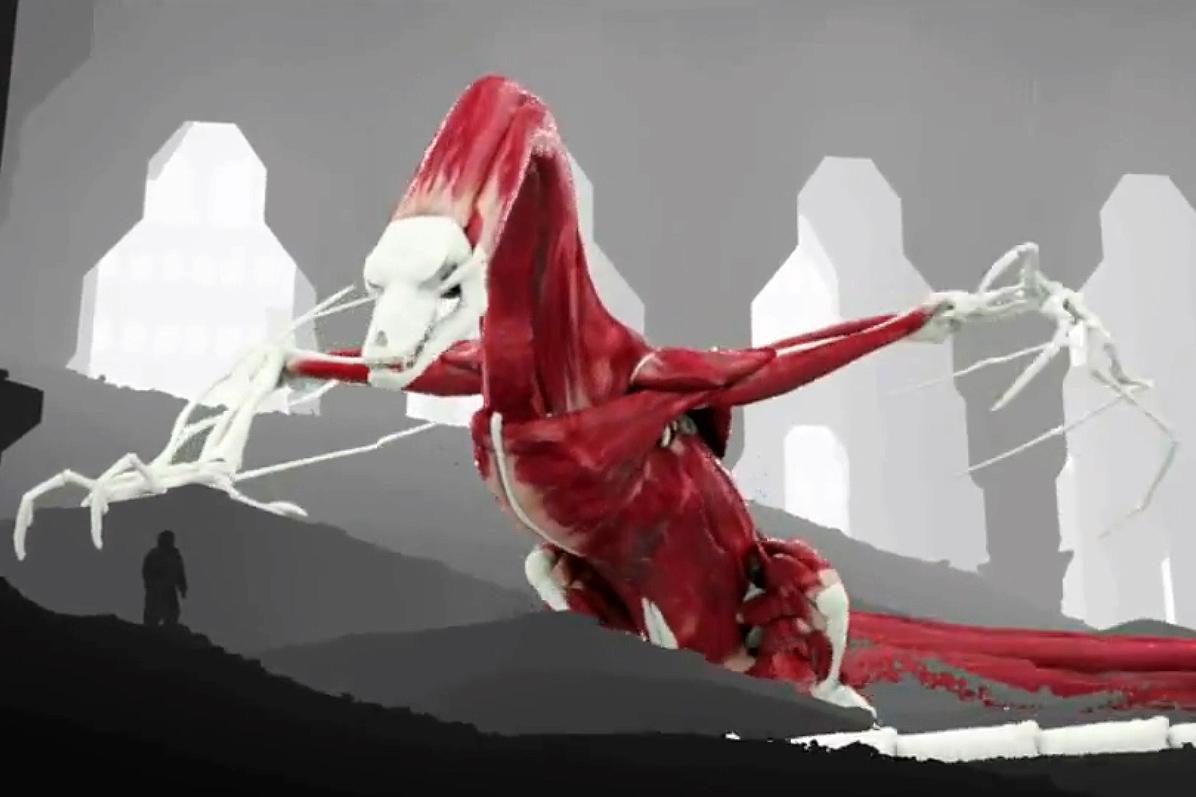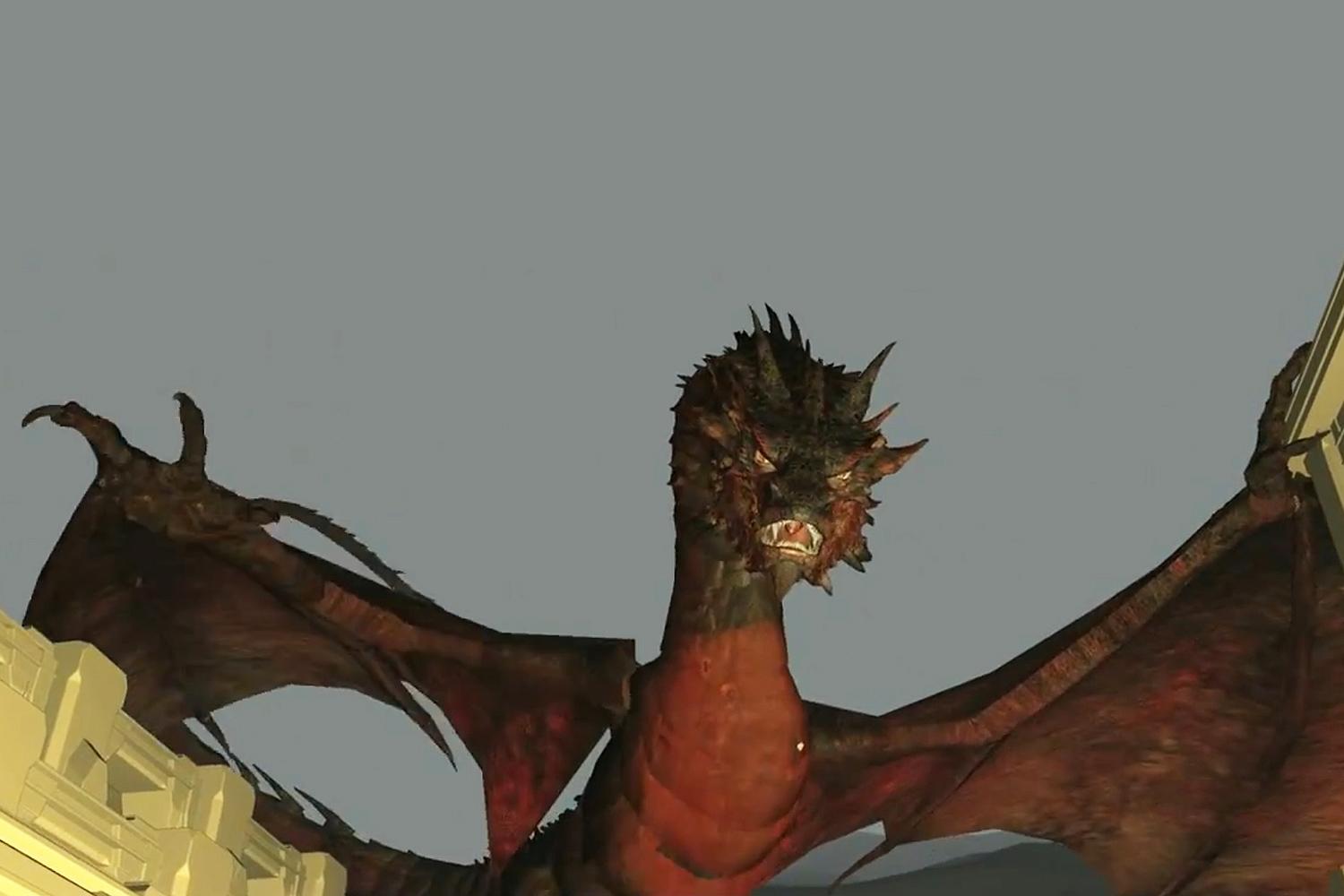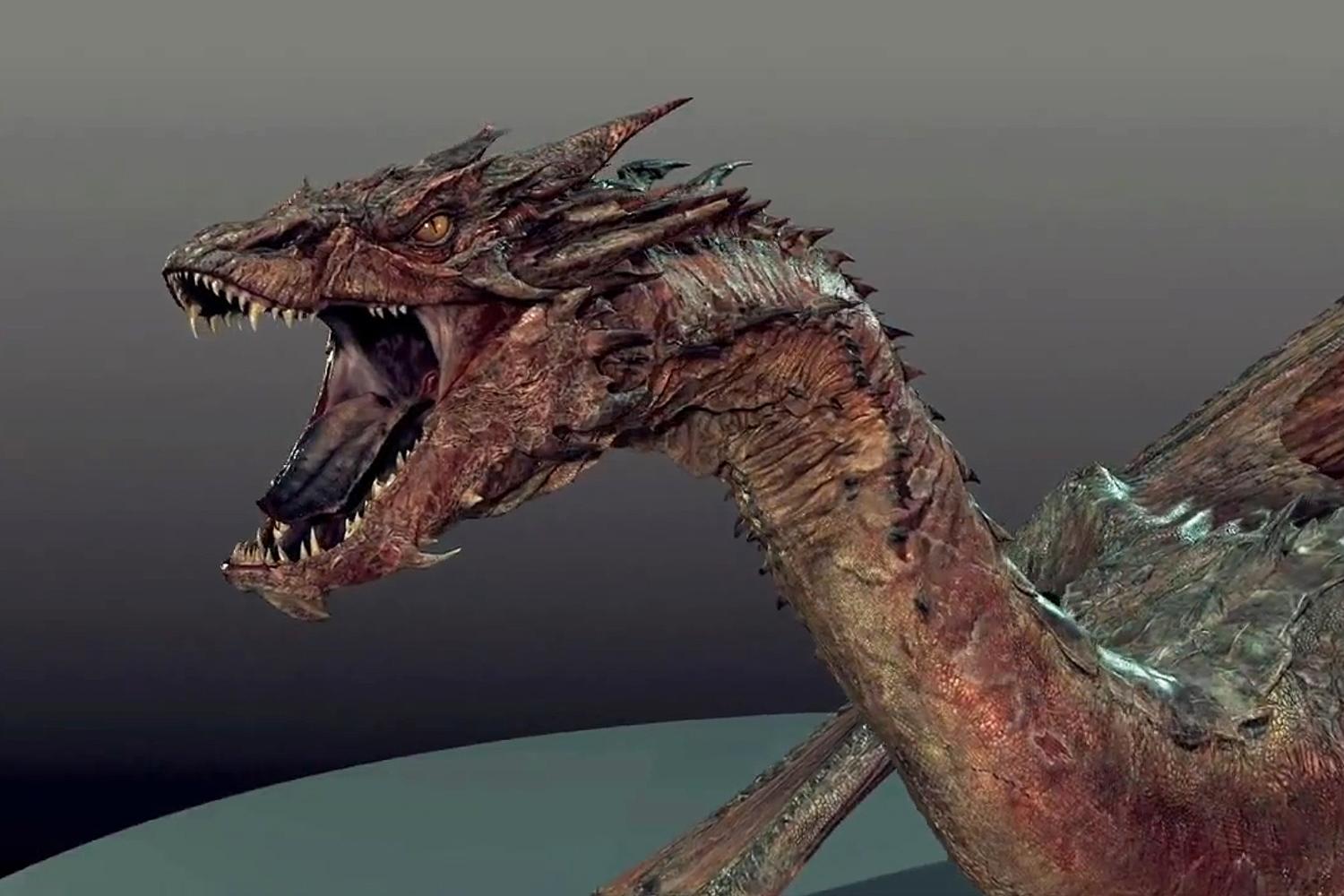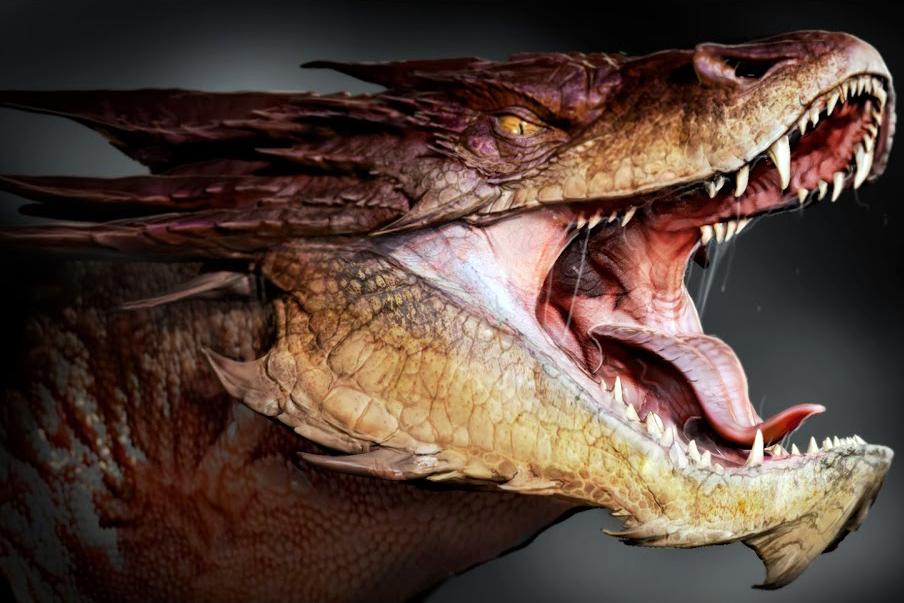|
Five films are nominated for an Academy Award in the “Visual Effects” category this year, and they each offer a nice look at the amazing tricks filmmakers and their effects teams can pull off on the big screen. In recognition of these five films and one of our favorite Oscar categories, we’re putting the spotlight on one “Visual Effects” nominee each day leading up to Sunday’s broadcast and taking a closer look at what made them stand out. Previously, we explored the breathtaking visual magic of outer-space thriller Gravity, the process of building the San Francisco cityscape of 2259 for Star Trek Into Darkness, the task of animating an army of automated suits of armor in Iron Man 3, and the trouble with trains in The Lone Ranger. Next, we look at The Hobbit: The Desolation of Smaug and the way director Peter Jackson brought the film’s fearsome, fire-breathing dragon to life. |
From the moment that plans were first announced for a live-action adaptation of J.R.R. Tolkien’s The Hobbit, fans of the 1937 novel began pondering the ways in which the mighty dragon Smaug could be brought to life on the big screen with all the majesty of his literary counterpart.
Given the massive, fire-breathing creature’s role in the quest that brought diminutive hobbit Bilbo Baggins and a company of dwarves there and back again, it was certainly no small task – and no small amount of pressure – in bringing the creature to life. After all, for many fans of high fantasy, Smaug is the definitive dragon and the standard by which all other winged literary lizards are measured.
The responsibility of doing right by Tolkien’s great dragon, it seems, was not lost on The Desolation of Smaug’s director.
The responsibility of doing right by Tolkien’s great dragon was not lost on The Desolation of Smaug’s director.
Fortunately for fans (and Jackson himself), a bit of inspired casting brought celebrated British actor Benedict Cumberbatch into the fold as the voice of Smaug, reuniting him with his Sherlock castmate Martin Freeman who plays Bilbo in the film. Any doubts regarding Cumberbatch’s ability to channel the iconic dragon were dispelled as the actor – and his voice – became a mainstream commodity thanks to roles in high-profile films like Star Trek Into Darkness and the introduction of Sherlock to American audiences.
And as the actor indicated on several occasions ahead of the film’s release, he did more than simply provide the voice of Smaug.
“It’s very freeing, once you put the suit on and the sensors,” said Cumberbatch of his motion-capture experience in a September 2012 interview. “I’ve never felt less encumbered, actually. And you have to be. You have to be free.”

In order to bring Smaug to life, Jackson turned to longtime collaborators Weta Digital and a team that includes four-time Oscar winner Joe Letteri, the senior visual effects supervisor for Weta who had worked with Jackson on The Lord of the Rings trilogy as well as the majority of his other projects – including 2005’s King Kong. No stranger to visual effects based on motion-capture performance, Weta found that the process of translating an actor’s performance to his on-screen alter ego presented quite a few new wrinkles in The Desolation of Smaug.
Much of the team’s celebrated motion-capture work in The Lord of the Rings trilogy and films like Avatar, King Kong, and Rise of the Planet of the Apes involved human actors portraying humanoid creatures on the screen (Gollum, the Na’vi, King Kong, and the ape Caesar, respectively), The Desolation of Smaug, however, featured a decidedly inhuman alter ego for Cumberbatch. Not only did that create a new set of challenges when it came to creating the dragon’s movements, it also forced the team to create the way the dragon spoke.
“It’s very freeing, once you put the suit on and the sensors.”
The difficulty in matching their human actor to his on-screen counterpart prompted a number of changes in the usual way Weta handled the motion-capture data they collected. Rather than have Cumberbatch perform in-character on the set to provide the necessary physical and vocal reference alongside the human cast – as was done with actor Andy Serkis for his roles in The Lord of the Rings and Rise of the Planet of the Apes, for example – Cumberbatch delivered the physical side of his performance early on for animators, and then circled back around to fine-tune his dialogue and match it up with the animation.
“That first session happened in Wellington before we started animating the scene,” Letteri told Hero Complex. “So we took that dialogue and we started playing with these different ways we might animate Smaug. The one [in the film] is ultimately the one we settled on but we tried other things. Is he bigger and just more ferocious the whole way? We played with a lot of different kinds of body language, and we presented these different [options] to Peter. He picked the same one [we had], so we knew we were in the same direction.”

“They went in and re-voiced some of the dialogue, wrote a few different lines, so Benedict did a couple of other sessions,” he continued. “Toward the later sessions [Cumberbatch] was actually able to see what we were doing with the animation and kind of have that in his head as well, so we were able to get this feedback loop going because it happened over a period of several months.”
The human side of bringing the great dragon to life wasn’t the only element that tested the skills of Weta’s team on The Desolation of Smaug. Given Smaug’s tremendous size, everything from his individual scales to the membranes that form his wings needed to be conceptualized, designed, and animated so that it would hold up to scrutiny on even the largest screens.
Using real-world lizards as a guide, the team added scars, dried skin, and various other features to the ancient dragon to create the weathered, battle-hardened creature that Bilbo encounters deep within the mountain of Erebor. All of the animation was done by hand.
Using real-world lizards as a guide, the team added scars, dried skin, and various other features to the ancient dragon.
In fact, the “Tissue” system created by Weta to animate Smaug was so groundbreaking that it was honored earlier this year with a Scientific and Engineering Award from the Academy of Motion Picture Arts and Sciences. The tool allowed animators to simulate the muscle movements necessary for Smaug to do everything from simple actions like craning his neck around a wall, to initiating flight using his shoulders and wings.
“As the design progressed, we created the high-resolution facial puppet,” continued Saindon. “We needed to maximize his range of expression but preserve the integrity of his scales as the face deformed. To deliver a full range of dialogue, we added complex lip and jaw shapes. We also had fine control over his nostrils, his eyes and brows, and his throat. We built Smaug’s crest of spikey horns to be flexible, so we could animate them to convey his mood and punctuate certain moments.”
Still, as anyone familiar with Smaug (or most other dragons, for that matter) should know, you have more to worry about than a dragon’s size and facial expressions if you ever come to face to face with one. (As Bilbo discovers in The Desolation of Smaug.) Along with their claws, fangs, and lashing tail, dragons also have a nasty habit of burning things to ash with their fiery breath – and Smaug is no exception.

According to Saindon, Smaug’s fire-breathing ability was modeled on flame-throwing tanks used in World War II. The specialized tanks projected fire in thick, almost liquid-like jets, so Weta used a tool developed for The Hobbit: An Unexpected Journey in order to generate better water effects as the foundation for Smaug’s fire-spewing physics. (The same tool was used for The Desolation of Smaug’s watery barrel-riding sequence, as well as Gandalf’s fire- and shadow-filled encounter with the Necromancer.)
From the dragon’s voice to the layers upon layers of digital magic that went into bringing Smaug to life, it’s only fitting that one of literature’s greatest monsters represents a labor of love for many of those involved with The Desolation of Smaug. While opinions differ on some of the liberties Jackson took with Tolkien’s original story, the decision to spend more time with Smaug in this chapter of The Hobbit seems to be the one change that has earned almost universal approval from loyal fans and newcomers alike.
After all, the final product speaks for itself – literally.
(Images © Warner Bros. Pictures, Weta Digital, and Moustache Luke)
Check out our coverage of the other nominees
Editors' Recommendations
- Building a better Predator: Behind the visual effects of Hulu’s horror hit Prey
- How visual effects took Love and Monsters’ sweet creature feature to the Oscars











